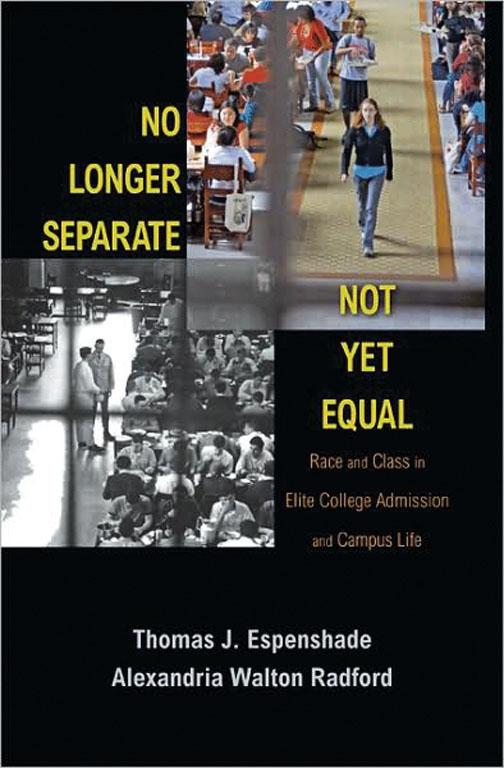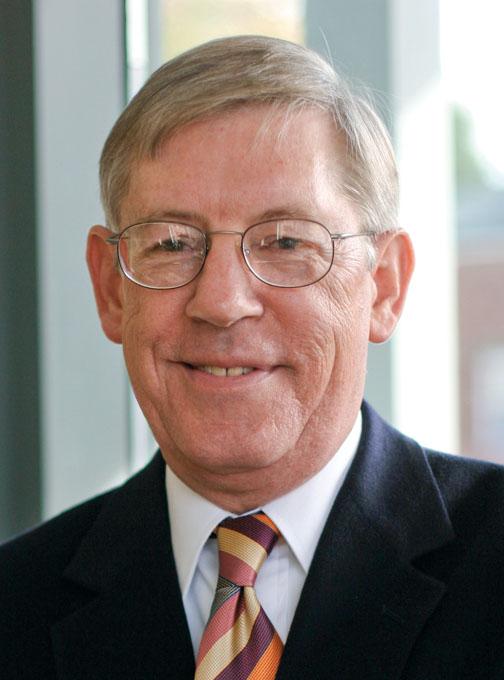For 20 years, pretty much since he joined the Princeton faculty, sociology professor Thomas Espenshade *72, who is white, has been singing in choirs at the Witherspoon Street Presbyterian Church, where the congregation is mostly African-American. While that doesn’t exactly put Espenshade on the front lines of America’s racial divide, it does mean he has more than just an academic interest in racial justice, the subject he and Alexandria Walton Radford *09 examine from all sides in a new book, No Longer Separate, Not Yet Equal: Race and Class in Elite College Admission and Campus Life (Princeton University Press).
Ten years in the making, the book grew out of Espenshade’s earlier work on immigration. Unlike past studies, such as The Shape of the River by former Princeton president William Bowen *58 and former Harvard president Derek Bok, Espenshade and Radford focused not only on black and white students, but also on Asians and Hispanics. The authors examined students’ admission strategies, including the use of test-prep courses and participation in advanced-placement courses and extracurricular activities; academic performance in college; and social interaction.

The research is based on what’s known as the National Study of College Experience, which includes the records of all who applied to enter 10 elite colleges and universities, both public and private, in the falls of 1983, 1993, and 1997. (Data were shared with the stipulation that the colleges not be identified, so don’t ask whether Princeton was among them.) That’s a total of 245,000 applications, which were supplemented by surveys filled out by 9,100 of those applicants.
Among the findings:
• In the admission process, an applicant’s social class matters, but it usually receives less weight than race or ethnicity. In the sample in the study, class mattered most in private colleges: At these schools, having a lower-class family background was equivalent to having 130 additional points on the SAT. However, the authors write, “the admission preference accorded to low-income students appears to be reserved largely for nonwhite students.”
• While students at selective colleges frequently interact with classmates from different racial and ethnic groups, they interact even more with students of their own backgrounds.
• Despite stereotypes to the contrary, it’s white students who do the most self-segregating on campus.
• Most students were satisfied with their college experiences. But among the groups studied, black students were the least satisfied with both their social and academic experiences.
The book’s implications for affirmative action have received the most attention from reviewers and educators, and opponents of that policy are likely to find ammunition in the findings. All things being equal — admission officials argue that all things are never equal — the authors say that an Asian student needed to score 1,450 on the SAT to have the same chance of admission as a white student who scored 1,310 and a black student who scored 1,000. However, Espenshade points out that he has not uncovered proof of bias, as the researchers did not have access to all the information considered by admission officers. With the data, he says, he hoped to provide “a little evidence to help clarify the claims people make.”
Those who hope to maintain current levels of diversity without relying on affirmative action will be disappointed by the book’s findings. The researchers ran different admission simulations — for example, by replacing race with class, and by disregarding SAT scores — but each time, the number of black students dropped. Their conclusion: “The only way to preserve the minority representation we now have is by racial affirmative action.”
The only other way to ensure continuing diversity at selective colleges, the authors argue, is to get serious about closing the so-called achievement gap in which black and Hispanic children begin to lag behind their peers at an early age and steadily fall farther behind. To that end, the authors propose that the United States should undertake an effort on the scale of the Manhattan Project to study and eradicate the disparity. Doing so, says Espenshade, who is planning to write a paper on the subject, would benefit not just minority students, but everyone.
Merrell Noden ’78 is a frequent PAW contributor.


